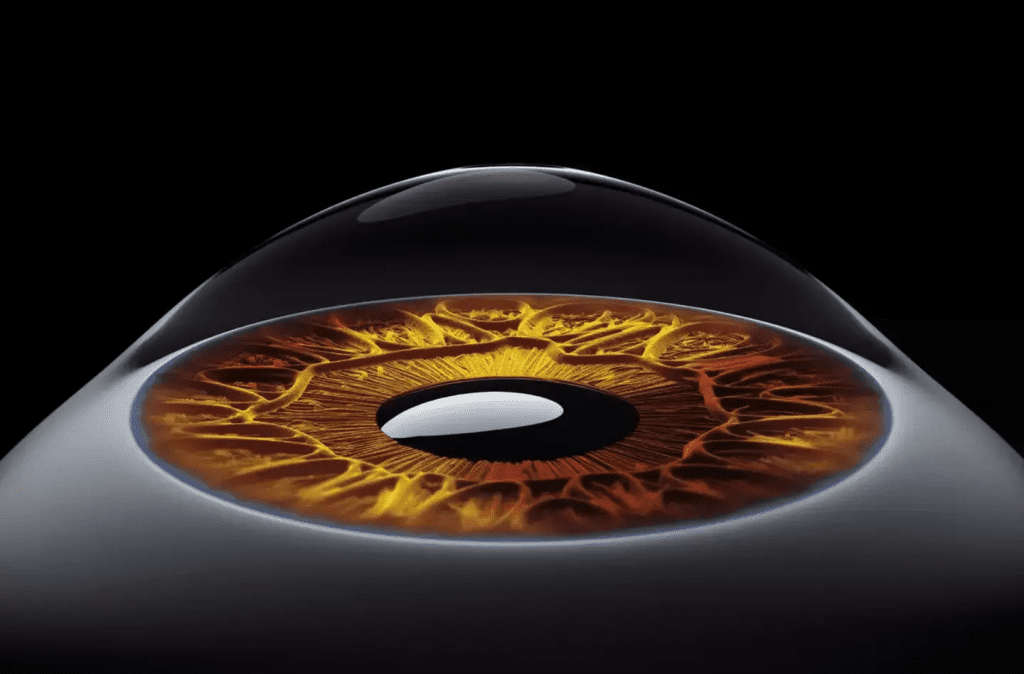Have you ever noticed peculiar beams of light radiating from everyday sources, making them appear almost magical? If you’ve ever wondered about these luminous beams, you might be part of a unique group with a condition known as astigmatism. This common eye condition doesn’t just alter your vision—it can add a touch of enchantment to the world around you, turning ordinary light into something extraordinary.

Whether it’s the break of dawn or the quiet of night, approximately one-third of Americans experience visual discomforts like squinting, headaches, night vision issues, and blurry vision. Blurry vision, in particular, can create those captivating beams of light you’ve noticed. One viral image shared on Reddit beautifully illustrates this phenomenon, showing light beams stretching from various light sources in a room, resembling a scene straight out of a science fiction movie.
This mesmerizing visual effect is what many people with astigmatism experience daily. But what exactly is astigmatism, and why does it cause these light beams to appear?
Astigmatism is a common eye condition that causes blurry or distorted vision due to the irregular shape of the cornea or lens within the eye. In a normal eye, the cornea and lens are perfectly round, allowing light to enter the eye evenly and focus on the retina. However, in an eye with astigmatism, the cornea or lens is shaped more like an elongated oval or a football, causing light to bend unevenly as it enters the eye. This bending creates a refractive error, resulting in the blurry vision and the distinctive light beams many astigmatism sufferers see.

For those with astigmatism, everyday lights—whether streetlights, car headlights, or even the glow of a computer screen—can appear to stretch into radiant beams, especially in low light or at night. This visual phenomenon can be both fascinating and disorienting. One Reddit user shared their experience, saying, “I always thought this was normal… like when it rains at night, I would look at the street lights and they would look like big red and green stars stretching further because of the raindrops on the windshield. Then I found out I have astigmatism; crazy to think not everyone sees the glare.”
Astigmatism can present itself in various ways, but some of the most common symptoms include blurry vision, the need to squint for clarity, frequent headaches, eye strain, and difficulty seeing at night. For those with mild astigmatism, these symptoms may not be noticeable, making regular eye exams essential for maintaining clear vision. Children, in particular, may not realize their vision isn’t normal, which underscores the importance of early detection.

The only way to definitively diagnose astigmatism is through a comprehensive eye examination conducted by a qualified optometrist or ophthalmologist. During the exam, the eye doctor may use several tests to assess your vision and the shape of your cornea, including reading from an eye chart, vision assessment with a phoropter, measuring corneal curvature with a keratometer, and assessing the eye’s refractive error with an autorefractor.
If you’re diagnosed with astigmatism, there’s no need to worry—it’s a manageable condition with several treatment options available. Depending on the severity of your astigmatism and your personal preferences, your eye doctor may recommend eyeglasses, contact lenses specifically made for astigmatism, or even surgical options like LASIK.

However, if your astigmatism is mild and doesn’t significantly impact your quality of life, you might not need any treatment at all.
Astigmatism, while a common and treatable condition, offers a unique way of seeing the world. Those radiant beams of light that you see—whether from a streetlamp on a rainy night or the glow of your phone screen—are a direct result of the way your eyes shape light. While it’s essential to manage any symptoms that impact your vision, there’s also something undeniably fascinating about experiencing the world in this way.

So, if you’ve ever marveled at the enchanting beams of light emanating from ordinary sources, you might be witnessing the world through the lens of astigmatism. While it’s crucial to maintain regular eye exams to ensure your vision stays clear, there’s no harm in appreciating the unique beauty that astigmatism can bring to your visual experience. Remember, seeing the world differently can be a gift—one that adds a touch of magic to the everyday.
Astigmatism may be a common eye condition, but it offers a truly unique visual experience. From the captivating light beams that stretch across the night sky to the mesmerizing glow of everyday sources, those with astigmatism are privy to a world filled with enchantment and wonder. By understanding the science behind this condition and embracing the beauty it can bring, we can all learn to appreciate the diverse ways in which we experience the world around us.


